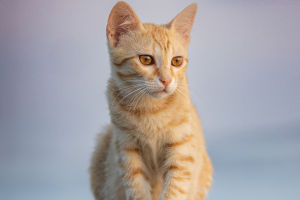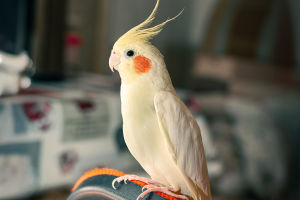Have you ever felt like your cat is ignoring you on purpose? That no matter how many times we call them or try to pet them, they just walk away like little royals?
Many of us think cats are distant, even cold—but what if that's not true at all? Let's take a closer look at feline behavior and uncover what's really going on behind their seemingly aloof eyes.
Where Does the "Cold Cat" Image Come From?
We often compare cats to dogs and expect similar levels of enthusiasm and attachment. But unlike dogs, cats evolved as solitary hunters. Their survival didn't depend on teamwork or constant social interaction. That's why many of their natural behaviors—quiet, cautious, independent—can seem "cold" to us.
However, that doesn't mean they don't care. It just means they express their emotions differently. A cat may not wag its tail like a dog, but it might follow us from room to room, sleep near us, or bring us little "gifts" as signs of affection.
They're Watching (and Caring) More Than We Think
Research shows that cats form strong bonds with their humans. In a 2019 study from Oregon State University, researchers found that many cats show secure attachment patterns similar to infants and dogs. When their owner leaves, some cats become anxious. When the owner returns, they show clear signs of comfort and trust.
We may not always notice these behaviors because cats are subtle. But once we know what to look for—a soft blink, a gentle headbutt, a tail wrapped around our leg—we realize that cats are far from indifferent.
Why Do Cats "Pretend" to Be Distant?
Sometimes, cats act cool simply because that's how they stay in control. In their world, showing too much emotion might be risky. They're cautious creatures who take time to trust. What looks like aloofness is often a way of observing and understanding us first.
We might also mistake their natural rhythms for rejection. Cats nap a lot, prefer calm environments, and don't always enjoy being picked up or handled. It's not that they dislike us—they just like affection on their own terms.
How Do Cats Really Show Love?
Once we learn to read their signals, we'll see that cats can be incredibly affectionate. Here are a few ways they express their love:
• Slow blinking: A "cat kiss" that shows trust and calm. Try slow-blinking back!
• Following us: They might not jump on us, but if they follow us around, that's a strong sign of attachment.
• Purring: Often a sign of contentment, especially when combined with snuggling.
• Grooming: If your cat licks you, it sees you as part of its family.
• Sleeping nearby: Cats are most vulnerable when they sleep—doing so close to us means they feel safe.
Can We Make Cats More Affectionate?
Yes, but gently. We can build trust by respecting their boundaries and understanding their preferences. Speak softly, let them come to us, and reward them when they show interest. Over time, even the most "distant" cat can become a cuddly companion.
Remember, every cat is different. Some are naturally more social, while others stay private. The key is learning what makes our individual cat feel comfortable.
Final Thoughts: Don't Be Fooled by the "Cool Act"
We hope this gives you a new perspective on your feline friend. What seems like distance is often just a different way of showing love. Once we learn to understand their quiet signals, we might discover our cats have been communicating with us all along.
Have you noticed small signs of affection from your cat? Do they blink slowly at you or curl up next to you at night? Share your story—we'd love to know how your cat expresses their love!
Let's stop calling them "cold" and start seeing them for what they really are—gentle, complex creatures with big hearts hidden behind soft paws.


